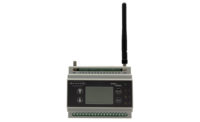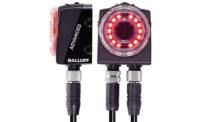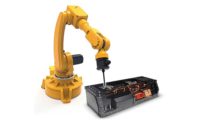Whether fully automatic, semiautomatic or manual, almost every assembly system has some type of sensor for inspection, error-proofing or production monitoring. Thanks to new technologies, sensors are becoming smaller, more robust, more accurate and easier to integrate.
The following is a sampling of some of the latest innovations.
Inductive Sensors for Factory Automation
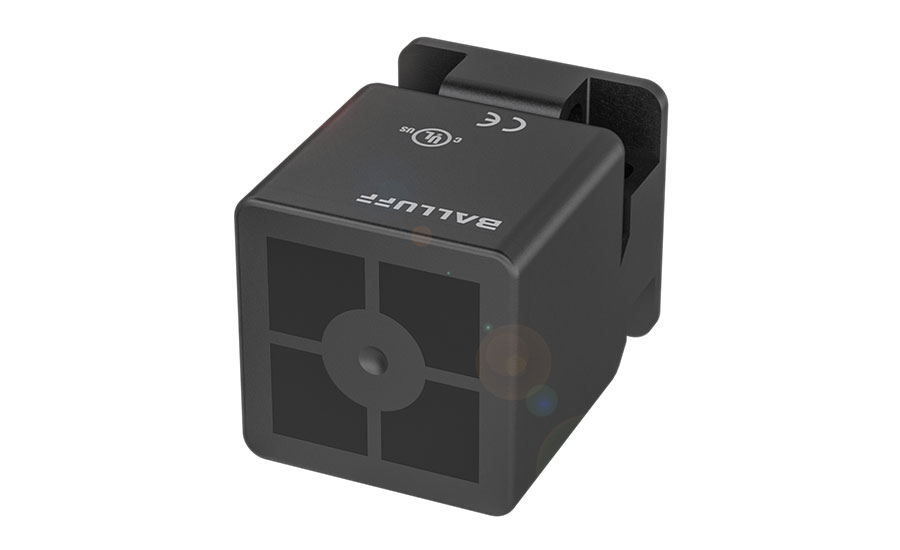
Available in barrel and block styles, Factor 1 inductive sensors reliably detect ferrous and nonferrous metals from the same distance, unlike typical inductive sensors that have a reduced range for nonferrous metals. This makes them ideal for the automotive industry and general factory automation, where components are made with a variety of metals, such as steel and aluminum. Reading both types of metals with a single sensor eliminates the need to change sensors when the material type is changed, which minimizes downtime.
The sensors are not affected by the strong electromagnetic fields found in applications like induction hardening and welding systems.
The barrel style sensors are especially well-suited for these environments, with brass housings that either have a nickel-free coating or a PTFE coating. Some also offer a PTFE coated sensing face for added protection. This, combined with their extended temperature range—from -40 to 85 C, depending on the sensor—ensures fault-free sensing, even in tough environments. They come in M8, M12 and M18 sizes, designed for flush and non-flush installation with sensing ranges from 1.5 to 8 millimeters.
The block style has an innovative plastic housing with operation and function indicator lights that can be seen from almost any angle. Also available in flush and non-flush versions, they have a sensing range of up to 40 millimeters, with a temperature range from -25 to 70 C.
Balluff Inc.
www.balluff.com
Light Curtains Are Easy to Install
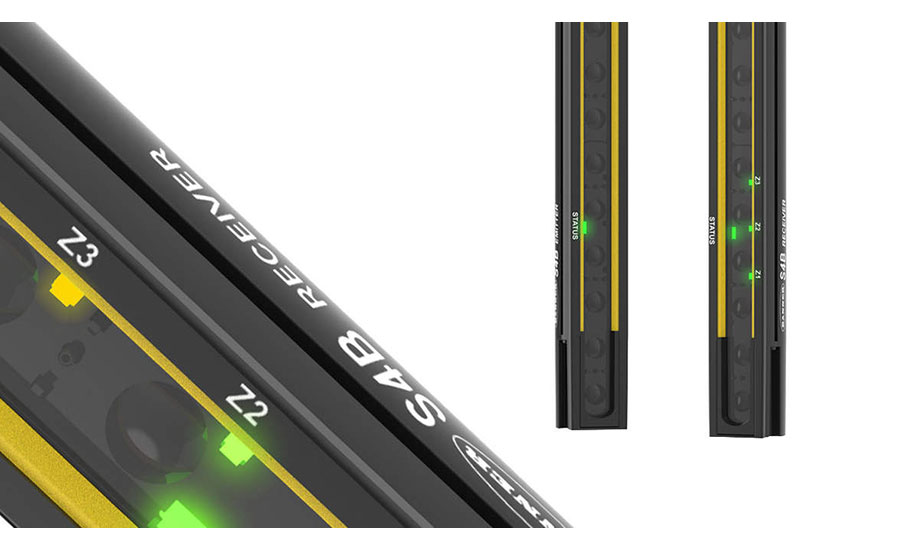
A Type 4 light curtain, the S4B delivers durable, dependable sensing for a range of applications and is easy to install, operate and troubleshoot. Its 30-millimeter resolution makes it optimal for hand detection. With end-to-end sensing in lengths from 300 to 1,800 millimeters, and boasting a 12-meter range, the S4B can tackle a wide range of safety applications while meeting the highest safety standards.
Installation is simple using an adjustable bracket. The light curtains click into place, are rotated into alignment, then locked in place with bracket fasteners. Tricolor LED alignment zone indicators instantly show if the curtains are properly or nearly aligned.
The S4B minimizes downtime by helping operators address problems before they become serious issues. For example, a weak beam strength warning LED on the S4B informs operators if the light curtain requires cleaning or is bumped out of alignment. Additionally, a remote signal can be sent via the cord set’s pin 5 to a PLC or HMI for local alerts.
The plug-and-play pigtail with five-pin M12 connection is removable for cost-effective replacement. A damaged cord set can be easily replaced by selecting and saving the scan code setting, then swapping the old cord set with a new one and keeping the existing light curtain in place. No PC is necessary to select and save the scan code setting.
Banner Engineering
www.bannerengineering.com
Hybrid Welding Force Calibration Transmitter
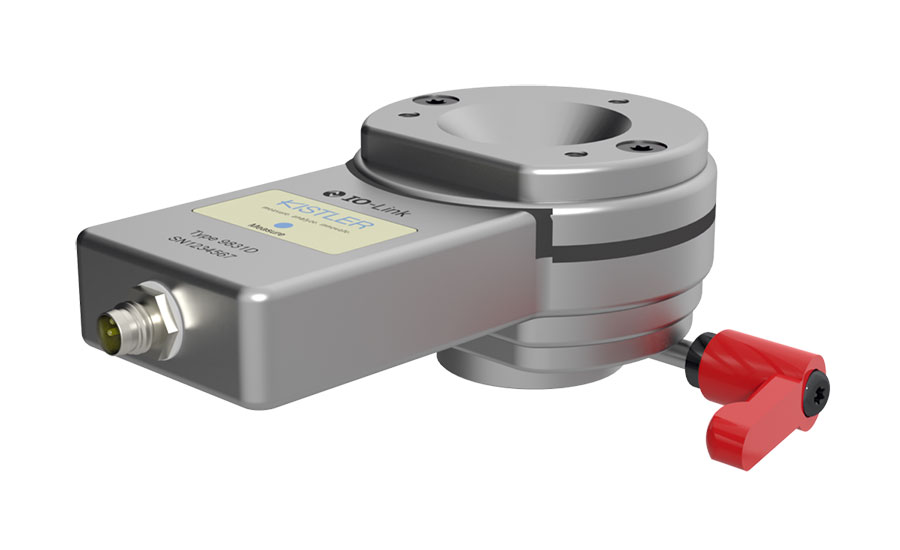
In addition to providing an analog measurement of electrode force during resistance spot welding, the Type 9831D welding force calibration transmitter offers readout and configuration via the digital IO-Link interface as an option. IO-Link improves flexibility and interoperability to deliver a more user-friendly experience when testing and calibrating robotic welding guns, as well as the force and strain sensor technology integrated in them.
The welding force calibration transmitter is precalibrated and ready to operate immediately with a standard ex-works sensitivity of 1 millivolt per newton. Advantages such as maximum measurement accuracy and repeatability ensure that this transmitter delivers reliable and trustworthy measurement results in every application. The transmitter is also equipped with integrated detection of the welding voltage, so engineers can record the welding duration in the resistance spot welding process and optimize it as necessary. Interchangeable inserts allow flexible use of this transmitter for various electrode types and diameters compliant with ISO 5821.
Analog measurement signals can be negatively affected by external influences as well as variations in cable lengths and their electrical resistances. With the help of IO-Link, the welding force transmitter can send digital measurement data and receive input signals in real time. Alongside these benefits, IO-Link enables remote configuration and monitoring of the device, so engineers can perform remote diagnoses and adjust settings more easily. Optional high- and low-pass filters, as well as possibilities for signal inversion and amplification, are just some of the additional features offered by the Type 9831D. As a standardized communication protocol, IO-Link also improves compatibility and interoperability among devices from different manufacturers.
Various mount adapters are available for the welding force transmitter, and the Quick-Mount adapter allows operation of the device by one person only. The device’s ground-insulated design improves workplace safety by preventing unintentional welding. An optional handle is available to make it easier to transport the transmitter.
Kistler Instrument Corp.
www.kistler.com
Sniffer Tip Finds Hidden Leaks on Small Tubes
Hidden leaks on small tubes are unwanted, costly and disruptive. On a refrigerator assembly line, for example, small leaks in hard-to-reach places can easily go undetected, which results in loss of refrigerants and refrigerant undercharge.
The I-Tip sniffer tip has been designed find all leaks, even the hidden ones. It is particularly suitable for finding leaks on pipes with a diameter from 2 to 14 millimeters, since it completely surrounds the test point and collects all escaping gas, making sniffer leak detection more reliable and effective.
The sniffer tip is an accessory to the Inficon SL3000 and SL3000 XL leak test instruments. Especially developed for leak detection on refrigerator pipes, the sniffer tip is particularly powerful in combination with 3D image recognition and the Ecotec E3000 leak detector. Additionally, when used in combination with the Protec P3000 and the XL3000 Flex leak detectors, it will find leaks faster and can help to reduce helium consumption.
The I-Tip sniffer tip comes in two versions. I-Tip SENS, equipped with compacted brushes, is the standard choice for every application. I-Tip RUGGED, equipped with a rubber lip, for use in dirty and rougher applications. Thanks to their special design with brushes or a rubber lip, they reliably suck up escaping refrigerant, even in the case of leaks that do not escape in the direction of the operator.
Inficon
www.inficon.com
Ultrasonic Leak Detector for Energy Conservation
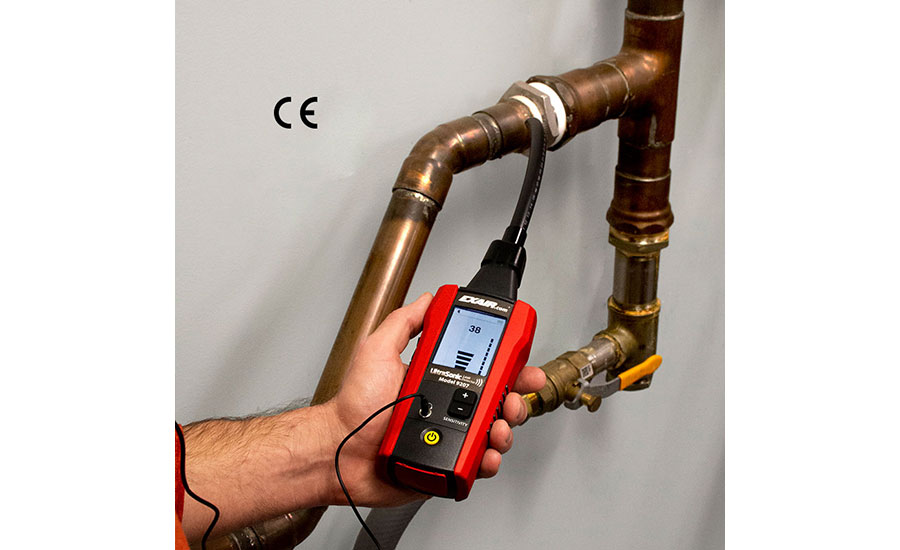
The Ultrasonic Leak Detector is a handheld instrument engineered to help locate the source of costly leaks in a compressed air system. Up to 30 percent of the compressed air generated in assembly plants is wasted through leaks that go undetected. The leak detector can identify and pinpoint these leaks, allowing quick repair and cost savings. Testing the various unions, pipes, valves and fittings of a complete installation can be done quickly and effectively at distances up to 20 feet.
High pressure gases create high-frequency turbulence when moving into an area with lower pressure, creating an ultrasonic or “white noise” sound that is beyond the range of human hearing. The instrument can detect these vibrations, creating an audible sound through headphones as well as indicating intensity via a front-facing LED display as it moves closer to the leak origin. The ULD can be adjusted to filter out background noise in busier plants with “+” or “-” buttons for fine-tuning sensitivity. The instrument can detect leaks in hard-to-reach areas, and it complies with the IEC 61326-1 standard for operation in typical electromagnetic environments inside factories.
The instrument is CE compliant and comes complete with a hard-shell plastic case, headphones, parabola, tubular adaptor, tubular extension and AA batteries.
Exair
www.exair.com
MCAD Data Available for Photoelectric Sensor
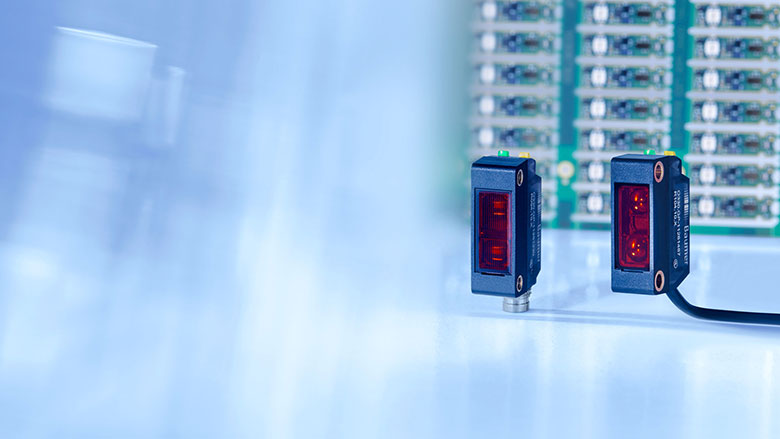
The O330 compact photoelectric sensor is available with 3D MCAD data that includes its beam path. This data enables engineers to check the positioning and field of view of the sensor during the design stage of a machine, which minimizes errors, adjustments and tweaking sensor positioning during the build stage. Thanks to Baumer’s qTarget technology, the beam paths in the 3D MCAD model accurately match reality. As a result, the sensor should not require further alignment after installation, and it is ready for use almost immediately.
The sensor has enhanced performance reserve capacities, particularly when detecting dark, irregular or perforated objects. This diffuse photoelectric sensor features background suppression, a detection range of 385 millimeters, a linear light beam with PinPoint LED, and a high immunity to ambient light.
Other beneficial features include a robust metal connector, an LED display visible throughout 360 degrees, and easy teaching thanks to qTeach technology. Just a touch with a ferromagnetic object will suffice for easy, reproducible and tamper-proof sensor teaching.
Baumer Ltd.
www.baumer.com
ASSEMBLY ONLINE
For more information on sensors, read these articles:
Protecting Photoelectric and Capacitive Sensors
Shedding Light on Different Types of Photoelectric Sensors
Laser Sensors and Automated Assembly


